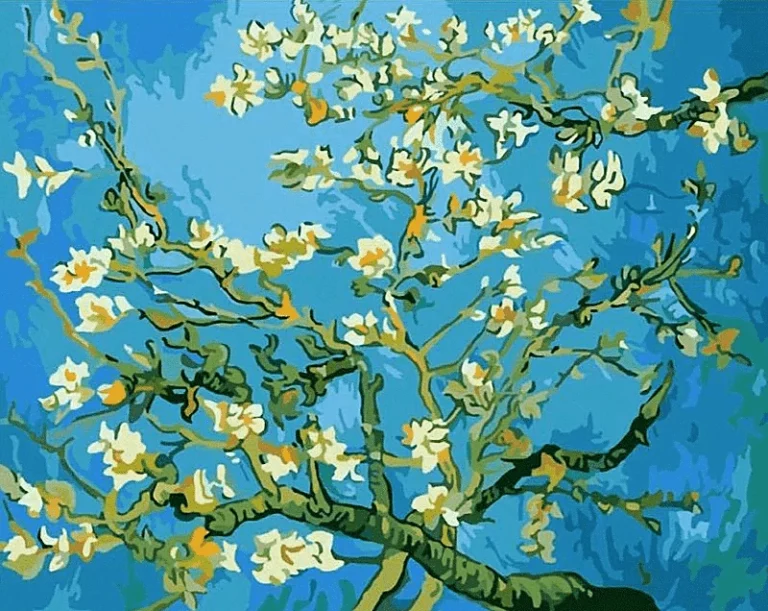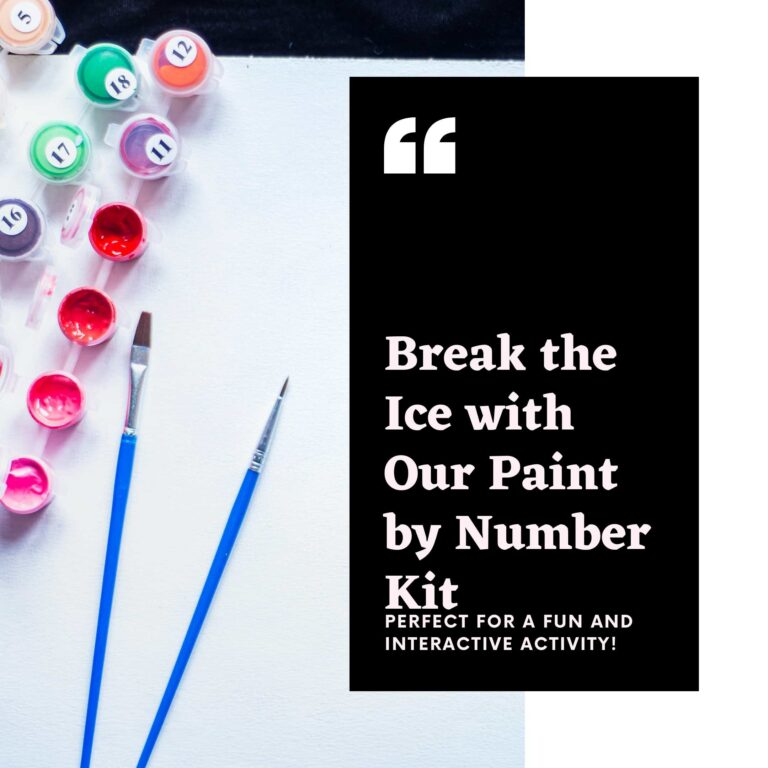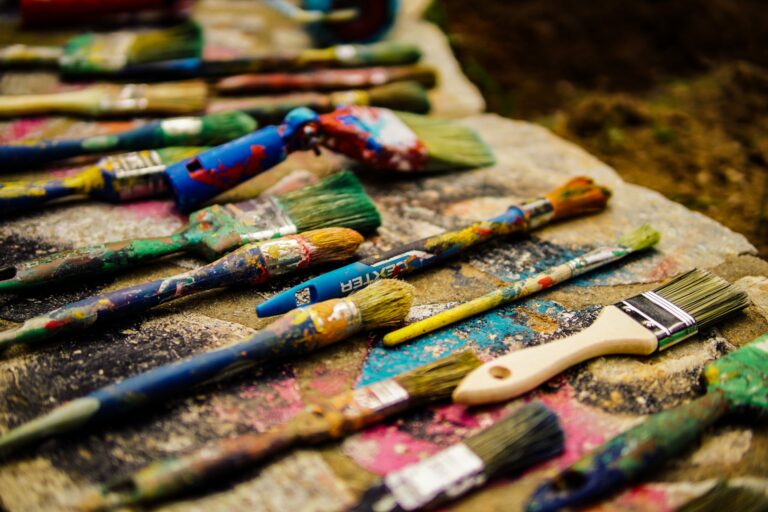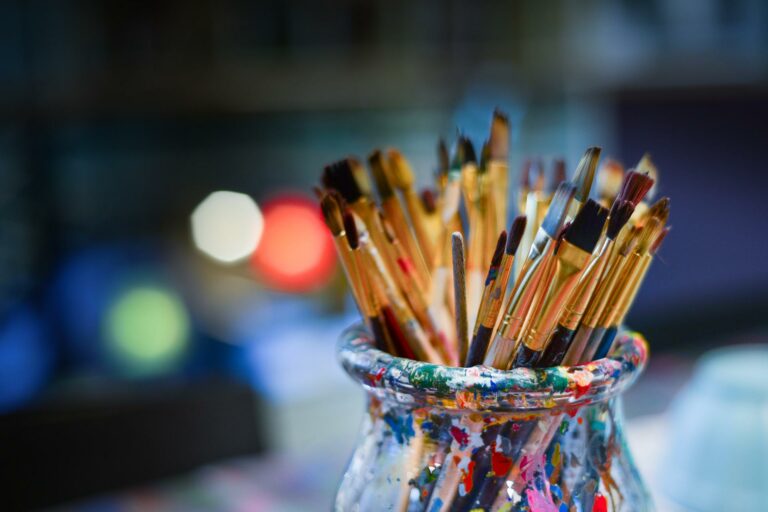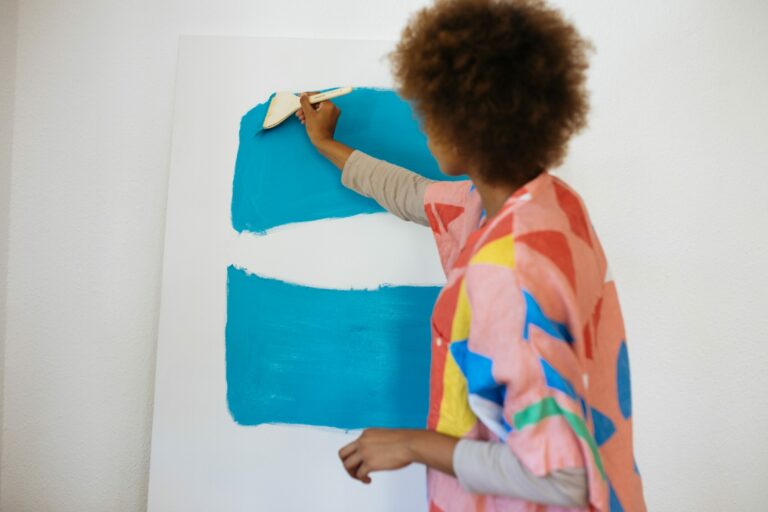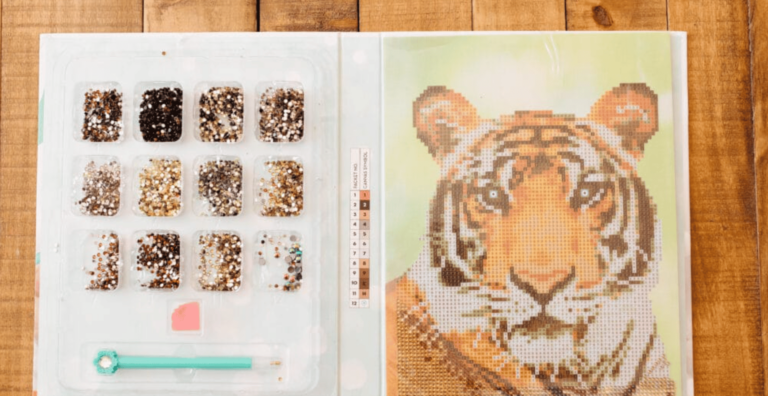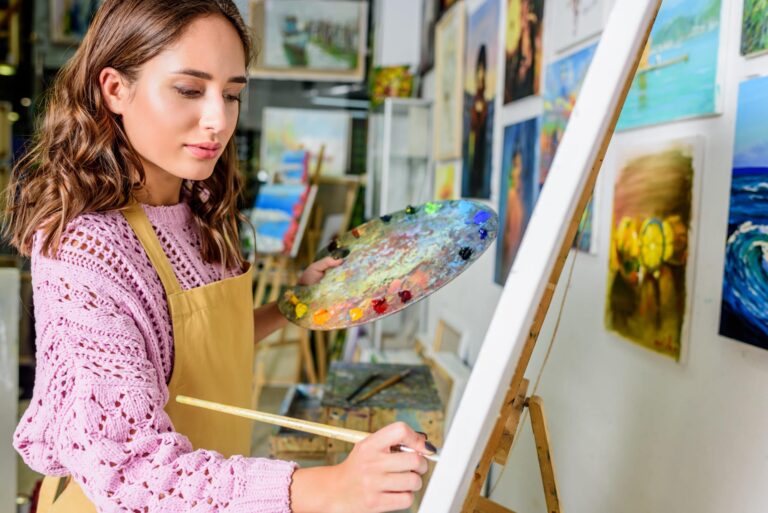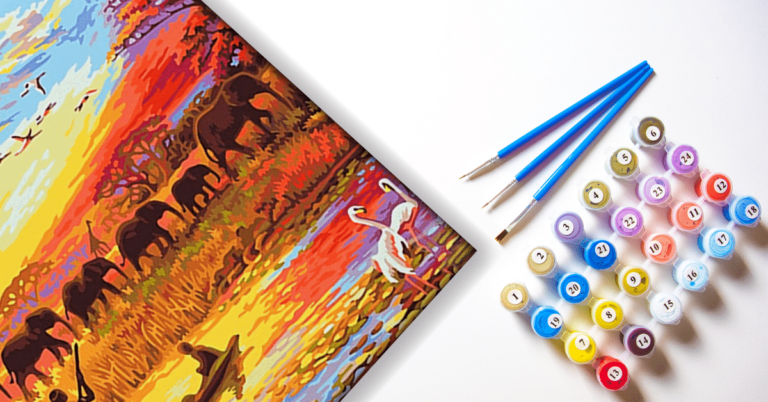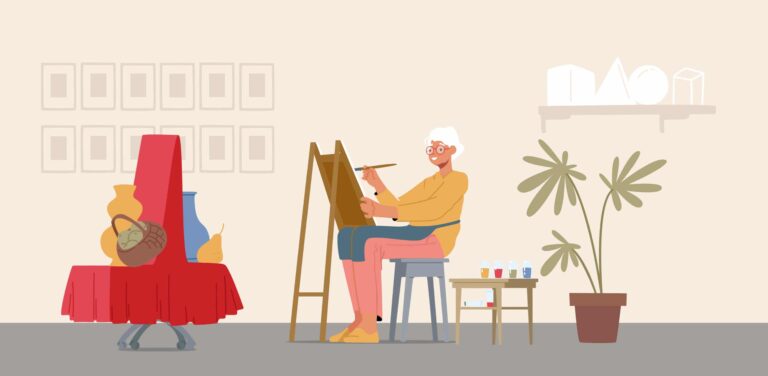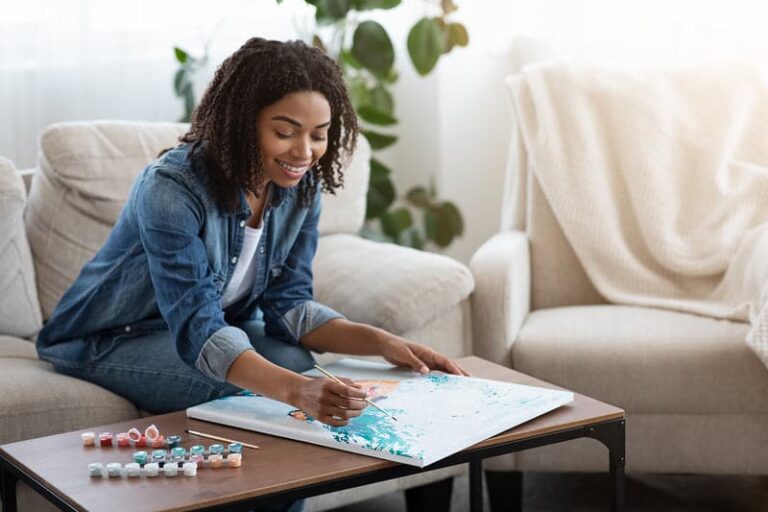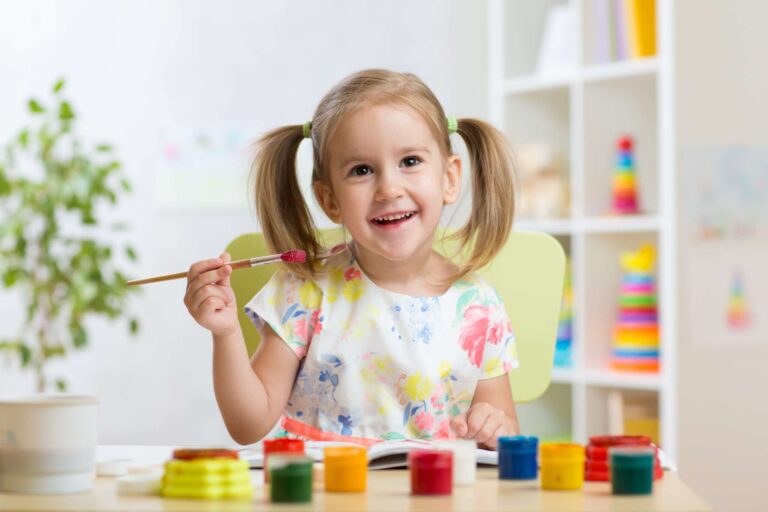
Not only is painting a great skill to develop, it’s also a wonderful relaxation technique! One of the most popular ways to enjoy painting is through the use of acrylic. Its versatile and durable qualities make it perfect for letting your creativity flow. Whether you’re a novice in need of a little guidance, or looking to get some new paint by number techniques, welcome to the beginning of your acrylic painting journey!
What Are the Techniques of Acrylic Painting?
Read through our 7 simple acrylic painting techniques for beginners to start creating your very own art!
- Starting acrylic painting
You can jump headfirst into acrylic painting and buy all the materials needed. However, an easier way to get started is with an acrylic painting by numbers set. Sure, some people may think it’s cheating. But, as acrylic painting is not yet an Olympic sport, cheating has nothing to do with it!
Once you have your kit, you can follow these straightforward acrylic painting techniques for beginners to create your very own masterpiece.
- Dry brushing
One popular brushwork technique that is great for acrylic paint by numbers techniques is dry brushing. This is exactly what it sounds like – using a dry brush! So, instead of wetting your brush before you dip it into the paint, you go straight for undiluted color.
This technique is usually used to add more paint to an already dried layer. This gives extra texture or highlights to a specific section. The downside is that your lines will likely come out uneven without the water to soften the edges. But this is acrylic for beginners, so let’s allow ourselves a little leeway!
- Detailing
Another popular technique that’s ideal for painting small areas is detailing. You’ll need a specialized extra fine brush for this. When it comes to acrylic painting techniques for beginners, this type of brushwork is great for fine details.
A little detailing can make your work look a little more professional, while you add a little extra flourish to the whites of eyes or strands of hair.
- Palette knife
If you want to add some extra ‘artsiness’ to your painting, use a palette knife to apply the color.
All you have to do is use the palette knife to scrape up a bit of paint and apply it to your canvas. From there you can use the knife like you would if you were spreading PB&J on toast. Easy!
- Layering
You might need to use this method when working on your acrylic paint by number techniques. It’s not the easiest method, but sorry, we didn’t make the rules! Layering means going over an area more than once with your color. This is sometimes needed to cover the numbers on your canvas so that your painting looks its best.
It’s important to let your first layer of paint dry completely before adding another layer. Take your time with this process for the best results.
- Mix colors
Why settle for existing colors when you can make new ones? Acrylic paints mix really well together. One handy hack for this is to use a toothpick to mix the colors. You should also make sure to clean your brush between dips, to avoid contaminating the colors.
If you’re working on an acrylic painting by numbers, you’ll find that some sections have more than one number. This means the instructions call for mixing different colors together. Of course, the numbers are just a guide, not a legal requirement. Feel free to go rogue and choose your own colors.
- The best paint by numbers techniques
All the techniques listed above are great for acrylic painting by numbers. Some, like dry brushing, mean your borders might be a little uneven, but that’s not a big deal.
Some popular painting techniques are less suitable for painting by numbers. This is especially true if you’re only just starting your acrylic painting journey. Some of these techniques are:
- Washing. Adding water to your paint can create a watercolors-like effect. However, unlike watercolors, acrylic paint will set permanently. The translucent effect created by the washing technique may not suit acrylic painting by numbers, as it might not cover the numbers on the canvas.
- Stippling. This means painting a section using tiny dots instead of brush strokes. Again, this gives a lovely effect, but might not be enough to cover the numbers and lines on your canvas.
- Splattering. This technique is pretty self-explanatory – you splatter paint from your brush on the canvas. As paint by numbers comes with a ready-drawn picture with set borders, splattering might not work well.
- Dabbing. Also self-explanatory, dabbing is when you dab at the paint with a sponge to create extra movement and texture. You could use this as a secondary layer on your acrylic paint by numbers piece, but it will mean deviating from the set color instructions.
- Underpainting. Underpainting means painting the broad lines of the picture you intend to paint before you start work. With paint by numbers, this is unnecessary, as the picture is already drawn on the canvas.
How do I start acrylic painting?
You can just buy all the supplies and get started. But the easiest way to get into acrylic painting is to start with acrylic painting by numbers. A painting by numbers canvas comes with the picture already drawn on it, and you have to paint in the different sections. The sections are numbered so that you know what color to use. This way, you can practice acrylic painting for beginners’ techniques and work up to more advanced stuff.
What should a beginner paint first?
Some paint by numbers kits are easier to work on than others. You might want to start with something simple, like still life or flowers. There are even kits for children if you want to get the family involved (or if you want one for yourself!).
Do you wet the brush before using acrylic paint?
Wetting your brush before using it with acrylic paint is recommended. You might also want to add a bit of water to the paint itself if it’s too thick.
That said, one popular brushwork technique is dry brushing. Just like it sounds, this means using your brush without wetting it. You also don’t add any water to the color if you want to achieve a dry brushing effect. This technique gives your color extra texture and vibrancy. But it can also mean your lines are uneven, as they won’t be softened by the water.
And there you have it! With a few tips and a little effort, you’ll go from beginner to season painter in absolutely no time! Try these acrylic painting techniques, have fun, and find the best method to make your art!




